This month, an exceptional album recorded in 1972 by a woman tipped at the time to be the next big singer/songwriter star on Columbia Records, finally comes out. In the half-century since Pamela Polland’s second album, Have You Heard the One About the Gas Station Attendant?, was recorded, music trends have come and gone, sub-genres and sub-sub-genres have risen and expired, but the kind of warm, exuberant, orchestrated pop/rock that was all the rage in the early 1970s has undergone multiple reappraisals, all of them favorable, despite being regarded as passé for much of the 1980s.
In recent years, cult albums by people like Vashti Bunyan (Just Another Diamond Day), John Howard (Kid in a Big World), and Catherine Howe (What a Beautiful Place) have been rediscovered, reigniting careers that were either dormant or very low-key. Polland’s case is different; her best album (Gas Station) didn’t actually come out at all. Of course, she wasn’t the first or last person to suffer the disappointment of a fully mixed and mastered album being scrapped. But her story is a uniquely poignant example of how an unexpected twist of fortune can deal an extremely promising career a near-mortal blow. It’s also a story of how dogged, bloody-minded persistence can pay off.
At the 1972 juncture of her career, everything was looking up for Polland, who today lives in Hawaii but comes from Los Angeles. She had already made two albums, both well-received rather than top-selling. The first was called Gentle Soul and came out in 1968. It was not a solo effort but was made by a duo, also called Gentle Soul. Pamela’s partner in this experimental, harmony-drenched folk-rock coupling was singer-songwriter, Rick Stanley. Gentle Soul mixed with all the music scene movers and shakers and up-and-comers of the period, from Terry Melcher to Jackson Browne to the Byrds, Tim Buckley, and Ry Cooder. But without proper promotion by Epic, their album came and went with little notice (Sundazed and Sony Japan reissued it in the 2000s).
In 1972, Pamela’s first solo album came out on Columbia, produced by George Daly and Norbert Putnam. It was an immensely likable long-player, but perhaps lacked that elusive reach-out-and-grab-you quality that could have helped it break through. Still, it sold a solid 25,000 and Clive Davis, closely overseeing Polland’s career, was enthusiastic about crafting a followup that would bring Polland’s considerable talents – her warm, bluesy voice and touching, romantic/spiritual songs – to a larger audience. Then came disaster; more on that later.
Polland grew up in LA, her father a classical musician, her mother a secretary at a music contractor. She was a cherished only-child whose musical inclinations were nurtured by her liberal, politically progressive family. Her father, however, was a classical purist and theirs was a rock ‘n’ roll-free household. Polland began writing songs so that she could hear contemporary pop music in her own home. “I loved Buddy Holly, the Ink Spots, stuff like that. But the biggest influence came in my late teens when I heard Bob Dylan’s first album. That was a life-changer.” Polland had already been writing songs for several years, but Dylan sparked a renewed creativity in her. “I wasn’t close to anyone into music at school. If anything, I was kind of an outcast, because I had strong Bohemian leanings from an early age. My peers were surfer girls and boys, so at best, I was a form of entertainment for them, but more an oddity than anything.” In her teens, the first of several pivotal music figures entered Polland’s life; Ry Cooder. “We worked together as a duo for two years,” she recalls. A few years down the line, music industry politics would damage their friendship.
Polland’s music industry ascent was reasonably swift. In the 1960s, in addition to creating the Gentle Soul album for Epic Records and enjoying considerable industry buzz, she had become an established songwriter, with a publishing deal, her work recorded by Linda Ronstadt, Nancy Ames, and Bobby Bare. “I was a late bloomer in terms of getting a boyfriend, so I wrote about my friends’ escapades in the world of teenage love and romance. I was also very influenced by the political issues of the era, so I wrote a lot of topical songs. I wrote a song called “The Ballad of Medgar Evers”, about the civil rights activist of the 1950s and early 1960s who was assassinated five years before Martin Luther King, but the same year as JFK. So did Phil Ochs; his got recorded! Then I went into more spiritually-focused songs, and lots of love songs, in my early 20s.” This blend of the political, the sensual, the spiritual, the personal and the universal is partly what gave both the Gentle Soul album and Polland’s first solo album (1972’s Pamela Polland) their distinctive, very appealing character, with the latter in particular giving the listener an experience akin to sitting down with a new friend and being immediately taken into her confidence. Other key elements of the Polland sound were intricate vocal harmonies, and a musical style drawing on gospel, soul, pop, rock, blues, and folk.
A vital figure in Polland’s musical life was her manager, Diane Sward (known today as Diane Sward Rapaport). The two met at the end of the 1960s. “Pamela arrived at my house in Mill Valley with one of my old boyfriends from Mexico,” recalls Sward Rapaport, “on a flat-bed truck with her piano on it and Canina, her dog, who looked like the RCA Victor dog. She started living at my house until she found her own way. She was the beautiful, quintessential hippie, in velvets and long skirts. Her velvet bag held all the spices necessary for great curries, which she taught me to cook on my 30th birthday, and a pair of silver spoons, which she was deft at playing, clickety-clack. I loved her songs and charisma. She was escaping LA.”
Following Gentle Soul’s under-promoted album and its failure to rack up decent sales, Polland was at an impasse. Among the problems, she was emerging from was a falling out with Ry Cooder. Terry Melcher, producer and musician, had suggested that Cooder and Polland make a blues album in New Orleans. Polland was on board until advised by Clive Davis that this change of direction might jeopardize her singer-songwriter career. She pulled out of the plan, leading to a collapse of her professional life. “Gentle Soul had disbanded, I lost my producer [Melcher], Ry has not spoken to me since, and I was on my own trying to figure out what to do. I tried doing a few recordings with Paul Horn as my producer, but he wasn’t right for my style. A lot of things were falling apart in my life – my beautiful husband, Greg Copeland, and I were having problems, the band, the record company; it was a mess.”
Polland took time out. Sward Rapaport felt an instant affection for her and set about planning various next steps for her career. “Pamela had great warmth, vitality, generosity and charm, and a breadth and range of interests which few people could match,” she recalls. It wasn’t long before a significant break came along. “I came back to LA to see if I could reconcile with Greg,” says Polland, “but he had moved on to another relationship. A girlfriend of mine who knew I was heartbroken said, ‘I’ve got something fun for us to do that will take your mind off your sadness.’ I went with her to the A&M soundstage where Joe Cocker and Leon Russell were having the first night of rehearsals for their tour. Leon recognized me. He’d been a fan of Gentle Soul, and he asked me to get up and sing with the choir.”
By the end of the evening, Polland had officially become part of what would be one of the most famous and infamous tours of the 1970s, Mad Dogs and Englishmen, which went on to be not only a double album but also a film. “Leon was incredibly adamant. I told him I would come if my dog could come too.” Polland spent two-and-a-half months on the road with the tour, singing with Claudia Lennear (whose glamorous looks were the putative inspiration for the Rolling Stones’ “Brown Sugar”) and Rita Coolidge, plus Nickey Barclay, the singer/pianist/songwriter who would later join Fanny.
With her public profile refreshed by the tour and Sward Rapaport’s ongoing support, Polland was once more an attractive proposition to record companies. She was pursued by two of the key players of the day; Clive Davis (Columbia) and David Geffen, whose fledgling Asylum label was just getting airborne. Polland found Geffen particularly appealing. Like Davis, he had been instrumental in Laura Nyro’s early career. She liked him. She was advised, however, to go for the best deal, not the best person. “George Daly, a producer and A&R guy for Columbia, arranged a meeting/audition with Clive at the Beverly Hills Hotel. It went very well. Clive fought for me because David Geffen also wanted to sign me. And Clive gave me the better deal.”
The Columbia deal enabled Polland to acquire her own Mill Valley home in 1971. She set to work on her first solo album that same year. “She was Clive Davis’ favorite,” says Sward Rapaport. Having acquired Laura Nyro for Columbia (managing to hold on to her despite David Geffen’s attempts to lure her to Asylum), Davis was very much on the lookout for more talented female singer-songwriters. Around the same time, he signed piano-rocker, Chi Coltrane, and further into the decade he would oversee Melissa Manchester’s career. According to Sward Rapaport, there was some degree of confusion and inefficiency (though not on Polland’s part) that inhibited the crafting of Polland’s debut. “There were endless changes of mind,” she comments, “and endless amounts of time for the final mix. The producer ended up billing $25,000 for the final mix, and I ended up arguing with Columbia not to charge Pamela’s account for it which, surprisingly, they did not.” “I think it took eight to ten months,” says Polland. “I was living in my home in Mill Valley, and we had a lot of fun. My life was about playing and writing and recording, fresh off the Mad Dogs tour, re-signed to Columbia after having the two biggest moguls in the business fighting for me – it was a very groovy time for me!”
Pamela Polland arrived in 1972, with the single, “In My Imagination” as a foretaste. It was an album of great charm and an effective introduction to Polland’s warm, intimate, big-hearted songwriting style. Taj Mahal, singer and blues guitarist, and Nicky Hopkins, pianist of choice for the Rolling Stones and occasional solo artist, were among the guest stars. Maybe “In My Imagination” was too unusual to be the killer single needed to move Polland beyond a cult audience. Nevertheless, there was plenty of buzz.
“I was signed to a large agency and was sent out on tour. There was lots of press, and I got to open for Van Morrison, Taj Mahal, Loggins & Messina, and others. I played the Bottom Line in New York, the Fillmore, lots of colleges and some large festivals in Boston and other places. I opened for Richie Havens, too.” “That album had a lot of life and vivacity, and some great songs,” comments Diane Sward Rapaport. Polland’s experiences as an opening act were sometimes baptisms of scalding lava; audiences revved up to rock and boogie would be disruptive and unappreciative when faced with a flower-child playing solo at the piano. Nevertheless, it was a time of great optimism, with Davis determined to break her nationally and then internationally.
The plan now was for Polland to fashion a blockbuster album that would take her career to the next level – the big time surely beckoned. She not only sounded the part, with her swelling, gospel-tinged pop songs, she also looked it; a glorious vision of waist-length hair and free-spirited fashion-sense – no one in her company doubted they were in the presence of a star. Davis invited her to list her ten favorite producers, from which they would then procure someone to help make her second solo album. On the list were Paul Simon, Paul Samwell-Smith (the British producer responsible for a string of Cat Stevens albums, plus Anticipation by Carly Simon) and Gus Dudgeon (also British, producer of Bowie’s “Space Oddity” and by then part-way through a run of hit albums for Elton John). Paul Simon said yes but was too busy to start work straight away. Samwell-Smith declined. Dudgeon expressed an interest but asked to see Polland live before committing. Clive Davis brought her to the CBS Convention in London, putting her on a bill with Earth, Wind & Fire, Dave Mason and Bill Quateman; Dudgeon, in attendance, was instantly won over. “I went to London and negotiated a contract with him,” says Sward Rapaport. “What a lovely, talented gentleman he was.”
The album was recorded primarily in the British capital at one of the best studios in the world – Trident in Soho. Polland flew over, eventually setting up home at Willsdon Mansions, an apartment building that still stands today, in Covent Garden in the West End. In 2019, the area is a tourist-heavy enclave, with designer flats for hedge-fund managers well beyond the reach of most pockets. Then, it was London’s down-to-earth, noisy fruit and vegetable market (as depicted in Alfred Hitchcock’s Frenzy in 1972).
“One of my favorite memories,” says Sward, “was that Columbia had arranged for Pamela and me to be picked up from the airport by a long stretch limo. That area [Covent Garden] was pretty seedy in those days, not fixed up and gentrified at all. The stoop where the apartment was located had milk bottles full of urine. The driver did a double-take but manfully took up our luggage. As I recollect, the floor Pamela was going to live on had four bedrooms; each lived in by a different couple. And there was a road manager that slept under the table in the kitchen. When we arrived, there were 26 bags of garbage waiting to be taken out. Old hippy digs. I was sharing space in an apartment on the floor above.”
“It was a very good life,” says Polland. “I loved how civilized English people were, and the great sense of humor they all had. But the London weather just about did me in. I was a born and raised California girl – raised on sunshine – and between the dark, cloudy days, and general soot of London air, I got kind of depressed.” Polland took a week off to fly to Tenerife during the sessions, returning with renewed vigor. “Trident was perfect in every way. Great rooms, great boards, great engineers.” Not only was Polland now in the hands of a master producer, the songs she wrote for her second album were among her most ambitious; a true artistic blossoming was in motion. Her ability to marry satisfying melodic lines with stirring chord progressions and rhythm was at its most profound.
The building blocks and aesthetics of her songwriting, apparent in “You Stand By Me” and “The Refuge”, had never been more beautiful. “Most of the sessions were such fun,” she recalls. “And Gus was an outstanding producer. He really knew how to get the best performances out of me and everyone else. We became very good friends during the year we worked on the album.” Among the contributors was Joan Armatrading. “I usually did my own harmonies and back-up, but there was one song [“Wild Roses”] I wanted another vocalist for. Gus suggested Joan, and we had a fun time. I don’t want to belittle the making of the first album, because it was a very sincere effort on everyone’s part, but working with Gus was a major upgrade for me.”
Polland and Dudgeon completed the album with some LA sessions, where noted players, Russ Kunkel and Leland Sklar, with whom Dudgeon had long wanted to work, took part. Taj Mahal made some key contributions, in particular, to “Thank You, Operator”, a witty contemporary blues composition. Thirteen tracks were whittled down to 11, then mixed, mastered and put in a running order. Artwork, including illustrations by Pamela’s boyfriend back at Willsdon Mansions, David Wills, was put together and approved. Another character in Polland’s London sojourn was Michael Ross, a young photographer who’d shot Elton John and who captured Polland in a variety of London settings, including Hyde Park. Frank Bez, who’d snapped Polland for the cover of her first album, took a moody, ethereal black and white of her in profile at the grand piano, which was intended for the inside of the gatefold. Listening to the heart-melting ballads, such as “Untitled (Dusty Rose)” and “To Earl”, and the searching, fearless ruminations of “The Ship” and “The Clearing”, all parties involved were convinced that Polland had succeeded in making the album needed to place her front and center of the singer/songwriter movement. It was to be called Have You Heard the One About the Gas Station Attendant?, a reference to a line in “To Earl”.
Then things went awry. “I flew from London to New York to play the album for Clive,” says Sward. Rapaport. “He stonewalled. I knew immediately there was something seriously wrong. He didn’t really listen, seemed kind of far away, dismissive and distant.” Despite Davis’ uncharacteristically impassive attitude, the album was readied for release. It was given a catalog number, and the artwork and galley proofs of the lyrics were circulated for checking. It joined the queue of Columbia albums headed for the presses. “I played the album for many Columbia sales and marketing staff, but it was as if something was coming down… they were noncommittal,” Sward Rapaport recalls. Two weeks later, her suspicions of ‘something coming down’ were confirmed in brutal fashion when she opened the New York Times to discover that Davis had been ejected from Columbia, accused of misappropriating over $90,000 for personal reasons. “It was the tip of an iceberg,” she says. “It clammed up the entire music industry for two years; investigations, charges of drugs, payola, party payola, corrupt royalty reporting, and on and on.”
While Columbia was recovering, Davis’ former underlings began fighting for the top spot and Polland’s album was postponed. And then postponed again. And then, to her dismay, taken off the schedule entirely. “When Clive was fired from the CBS corporate structure, it was news that rocked the entire music industry,” says Polland. “The reasons he was given for being fired were things that every record company executive did at the time. The 12 vice presidents were all vying for Clive’s position. They waited for my contract to run out about six or seven months later. And that was that.”
There was a slow cruelty about the way events unfolded because Polland at first assumed, with good reason, that another company would pick her up, purchase the album from Columbia and issue it belatedly. Both she and Sward Rapaport threw themselves into achieving that end. “There’s a story about how to boil a frog,” says Polland drily. “If you put it in boiling water, it will jump out. But if you put it in cold water, and slowly begin to heat the water and bring it to a boil, the frog doesn’t know what’s happening until it’s too late. That pretty much sums up what happened to me.”
In the terms of that analogy, Polland was at first in what felt like reassuringly safe, cool water. While waiting for her next record deal, she did some touring in support of her still-in-print first album. Then, she created an alter-ego, Melba Rounds, a blues/jazz diva who sang racy, raunchy numbers. She became a nightlife star in San Francisco, in a show replete with pianist and backup singers/dancers, The Tasty Toppings. “I had sung the blues with Ry Cooder a decade earlier. Revisiting that genre was an easy jump for me and creating the Melba Rounds character helped me step aside from my singer-songwriter persona and create another avenue of music both to enjoy and to use as a performing device.”
Meanwhile, Sward Rapaport was hired to produce a San Francisco fundraiser, the Coyote Hooker’s Masquerade Ball, and saw an opportunity to snag Polland the much-needed deal to keep her recording career in full swing. “It was one of the great San Francisco parties of all time,” she says. “We decided to ask some record people to see Pamela at the ball. For this, we devised a really fun promo – an invitation on what looked like wedding stationery. The first page read, “Make me an offer I can’t refuse” and the second page was the where/when about the event, signed ‘Melba Rounds’. We hired some lovely looking LA model to hand-deliver the invitation, wearing a long gown and white gloves.”
It would be a relief to report that such an imaginative, high-spirited promotional gambit was a resounding success. The opposite was true: “Only a few execs from Warner Bros showed up, none from other companies. And none offered Pamela a deal.” Now the water was getting hot. “It was an epic fail, basically,” says Polland. “What a grand effort on our part to try and get industry execs to show up. Another fail was that Diane actually got me an interview, as Melba, for the Johnny Carson show. I think someone who worked there saw a magazine spread about Melba and they were interested. That could have been a real career-maker for me, but I guess they weren’t interested enough – I didn’t make it past that preliminary interview.”
In the two or three years since leaving Columbia, it was becoming painfully apparent to Polland that, despite being fought over by Geffen and Davis back in 1971, she was now flatly ignored by every major label. Even the independent labels approached by Sward Rapaport and Polland weren’t biting. Clive Davis himself, by now rehabilitated at Arista, was no longer interested. “I had been blacklisted,” says Polland, “because of being so closely associated with Clive. No one would touch me. I was heartbroken. We tried diligently to get anyone else to pick up the album. It was a total fail”.
By now, a sense of disillusionment hung over the whole project of Polland’s singer/songwriter career – it had been slow-boiled to near-oblivion. “Because of some of the other groups that I managed,” says Sward Rapaport, “and some of the other bands I knew, I realized that artists were pawns of the quixotic nature of what was a very corrupt industry, not just limited to record companies. Many people in the industry – agents, promo people, managers, producers – took advantage of the artist and the net result was that very few ‘middle level’ artists made any profit at all from their art. At that point, both Pamela and I recognized that we were not having a good time in that industry. At my level, I recognized then that I did not want to work with or fight the knowledge of the corruptive practices and the disastrous effect on artists. Pamela and I said goodbye to big business. Soon after, I had the idea that what I wanted to do for the next part of my life was to teach musicians business, teach them to profit from their art. And that became a full-time commitment for the next ten years.” Among the extremely well-received books that Sward Rapaport wrote, passing on her hard-won expertise, was How to Make and Sell Your Own Record (1979). By 1999, it was on to its fifth edition, published by Pearson, with a foreword by Loreena McKennitt, having sold more than 250,000 copies.
Polland, meanwhile, stayed positive, kept singing and writing, and transitioned into teaching. “I had become a teacher of transcendental meditation in 1970. I became a voice teacher in 1980 and a yoga teacher in 1992.” She moved to Hawaii and released the independent album, Heart of the World, featuring Bonnie Raitt and Kenny Loggins, in 1995. The album Hawiianized, on which she interpreted pop standards, including, “Here Comes the Sun” and “Over the Rainbow”, in Hawaiian style, followed in 2010. “I became a ukulele teacher in 2007, and I’ve also taught several of my friends to swim long distances in the ocean, so it does seem that I’m very inclined to teach.”
Polland played me Have You Heard the One About the Gas Station Attendant? when we met and became friends in the late 1990s; she had salvaged half-track tapes of the finished project. It swiftly became one of my favorite albums. At the time, I was on the features desk of Woman & Home, one of the top-selling monthly glossies in the UK, in the mold of Good Housekeeping. I did occasional music writing on the side, having interviewed people like Carly Simon for the Evening Standard, but I did not see myself as someone suitably placed to get an unreleased album out on to the market. In any case, the idea hadn’t arisen.
Ten years later, I was more experienced, having taken over the film/music section of the magazine. I was also at a professional impasse, suffering a nervous breakdown following the death of a partner. Meanwhile, Sony Japan had tried to get the album out (they had reissued Pamela Polland and Gentle Soul in 2007) but told Polland that the masters were missing. This near-miss seemed so unfortunate that it prompted me to look into it. I assumed that if Sony Japan were reporting the masters as lost, it had to mean they’d asked all the appropriate international offices, so I turned my attention to other avenues, like the Gus Dudgeon estate (Dudgeon had died in a 2002 car accident). No luck. It was only in 2013, while I was recovering from a life-changing accident that I decided to write a piece about the lost album for The Huffington Post, and things started moving. I was immediately contacted by Richard Bowe at Sony in London on whose desk the tapes were sitting, alive and well. They’d never been lost. Perhaps Sony Japan’s 2007 inquiries had not gone beyond the American offices.
Another six years followed in which industry vagaries like ‘rights issues’ were dealt with. I decided to be as bullish as possible, and simply not to accept that anything was a dead-end, no matter how dispiriting or off-putting or final it seemed. Along the way, I formed friendships with people who knew more than I did and was able to acquire more experience in the reissues world, working on projects including albums by Melissa Manchester, Rupert Holmes, and Lalomie Washburn. By the time BGO (Beat Goes On), a long-established reissue label in Britain, licensed the album, I had a much better sense of how things worked. By late 2018, the project was up and running. BGO outdid themselves with the visual presentation and remastering, including Polland’s first album in the package, and tacking on the two bonus tracks I was hopeful might be in the Sony vaults (“Take in the Light”, “Didn’t Get Enough of Your Love”), both recorded in the Gas Station sessions.
So, at last, 46 years after Polland and Dudgeon committed these wonderful songs to tape, helped by shimmering arrangements from Del Newman and David Campbell and players of the calibre of Barry DeSouza, Herbie Flowers and Ray Cooper, plus the engineering skills of Bowie’s producer, Ken Scott, the music has finally found its way out into the world. These are songs (my favorites being “The Ship” and “Untitled (Dusty Rose)”) that have accompanied me through the most joyful and devastating of times, as one’s favorite music inevitably does. Being able to do anything at all, however slight, to bring it to wider attention has been an honor. “I’m kind of in a state of disbelief,” says Polland. ” I only wish Gus were alive to see this finally happen.”


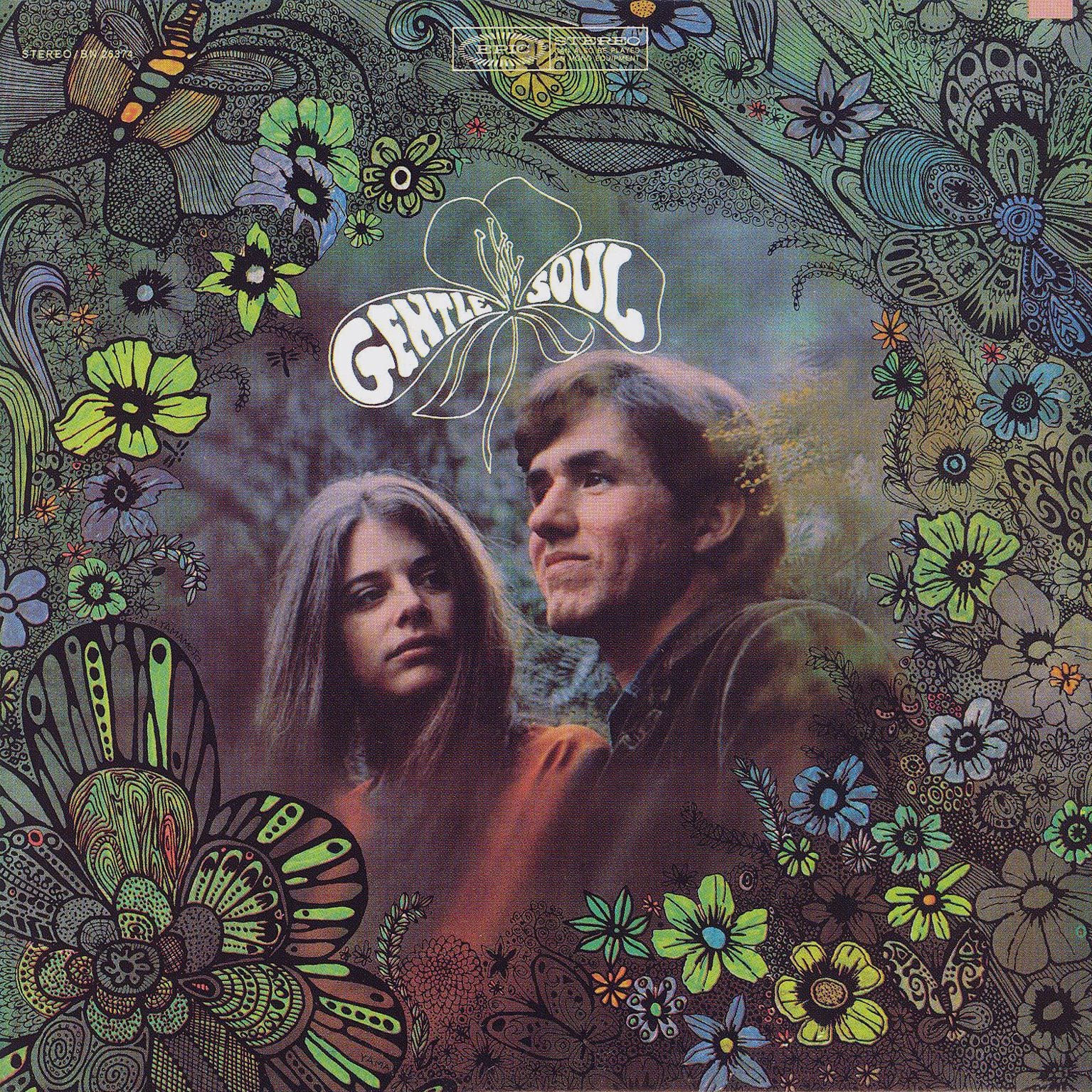
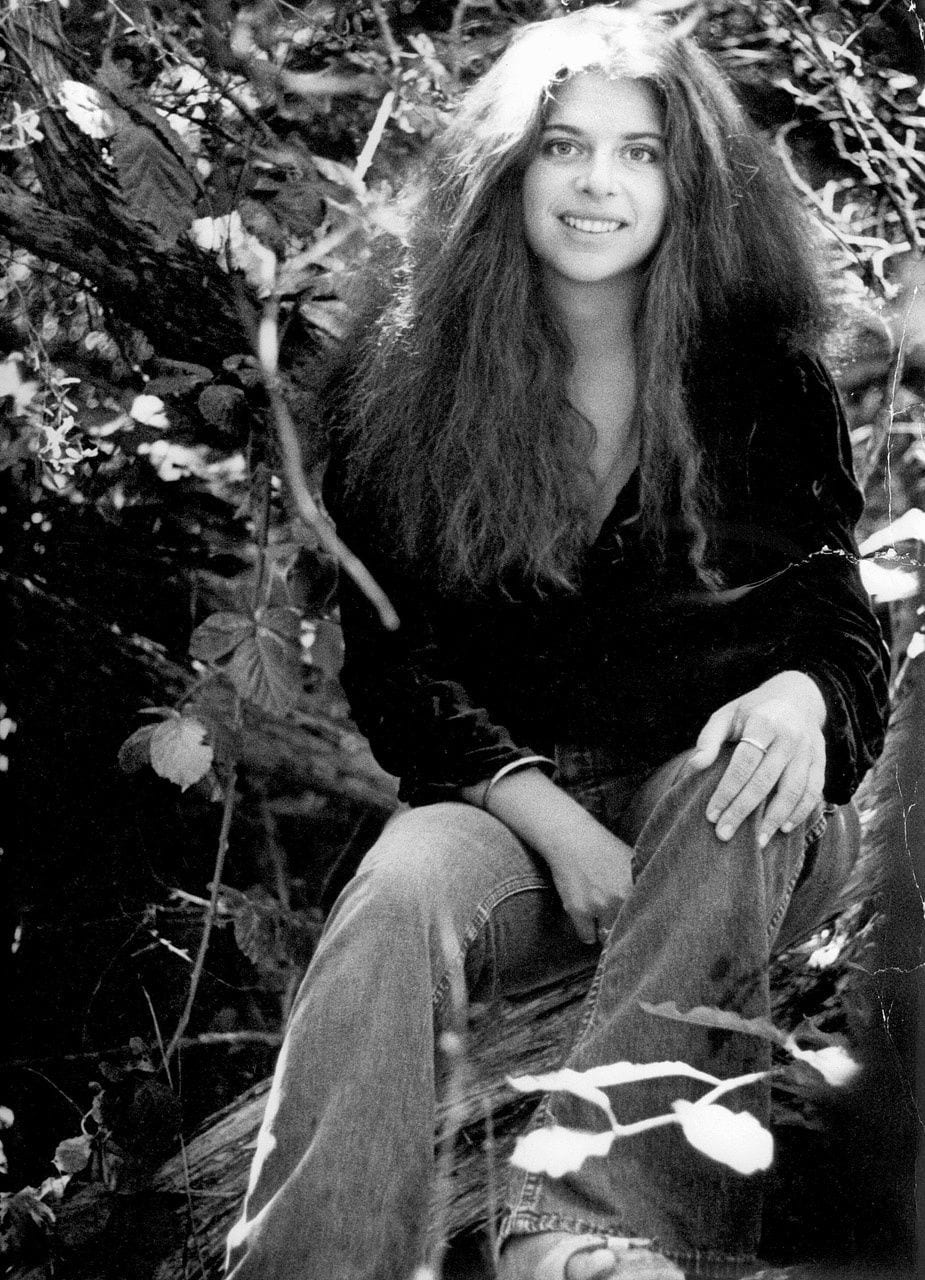
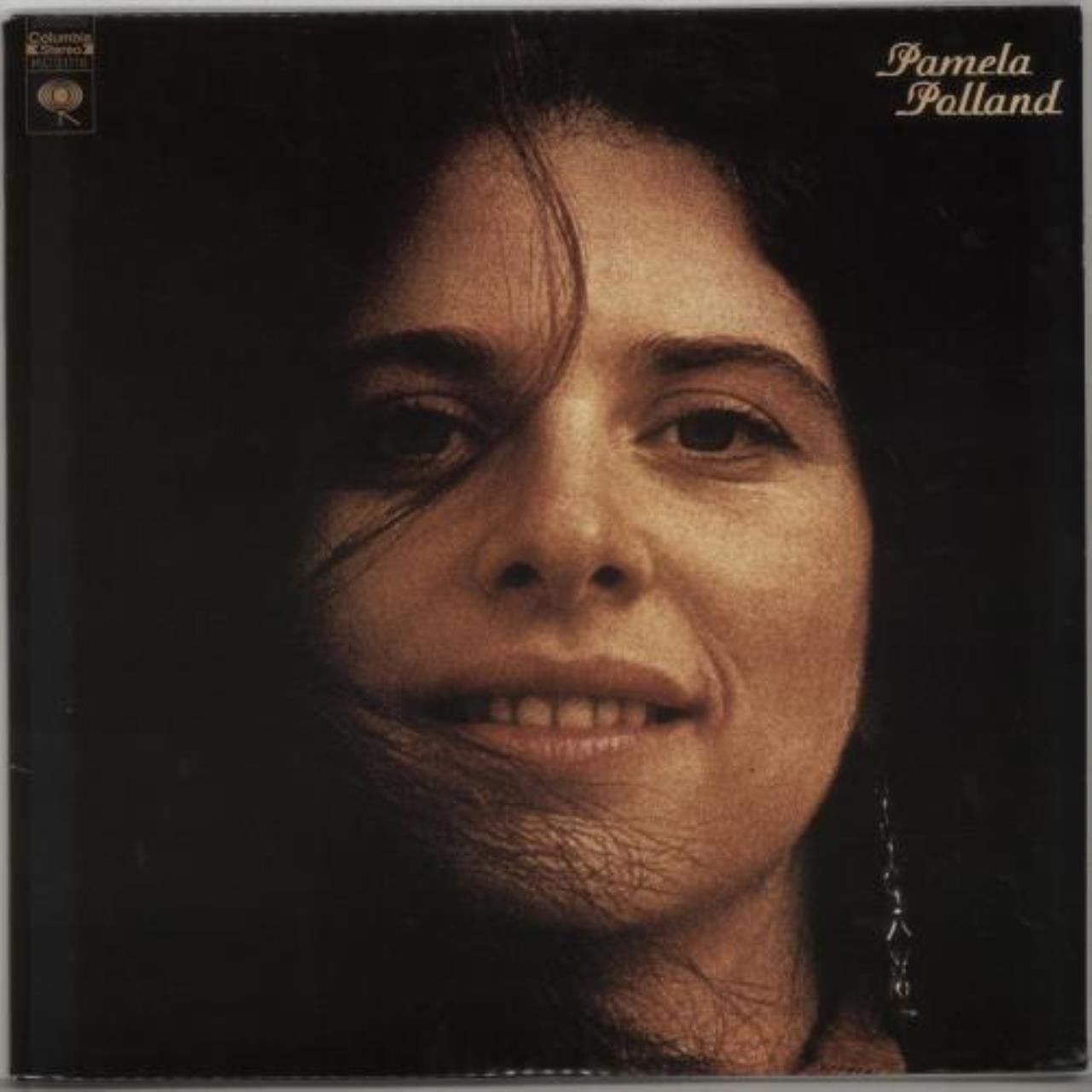
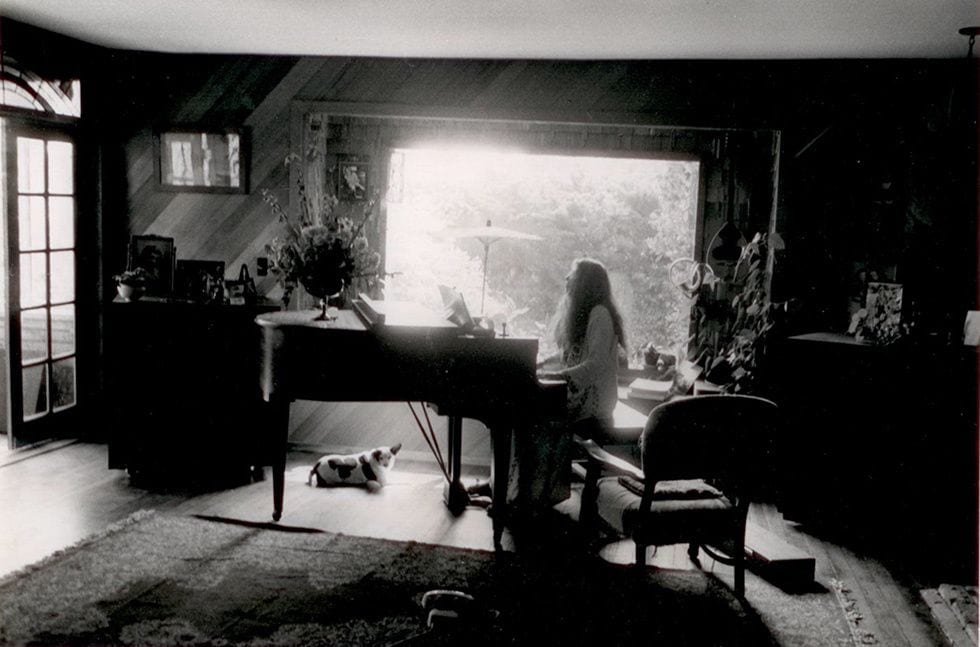
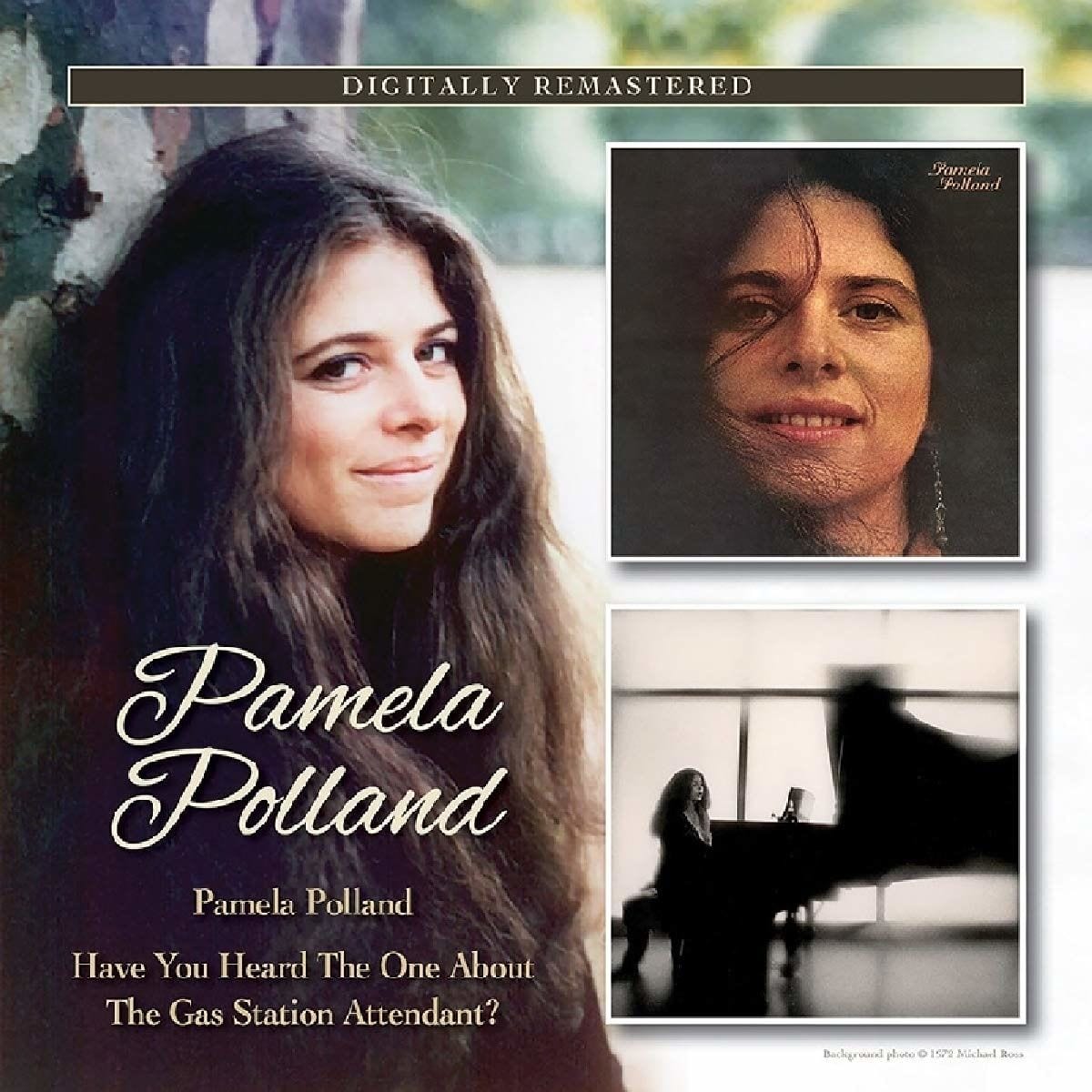
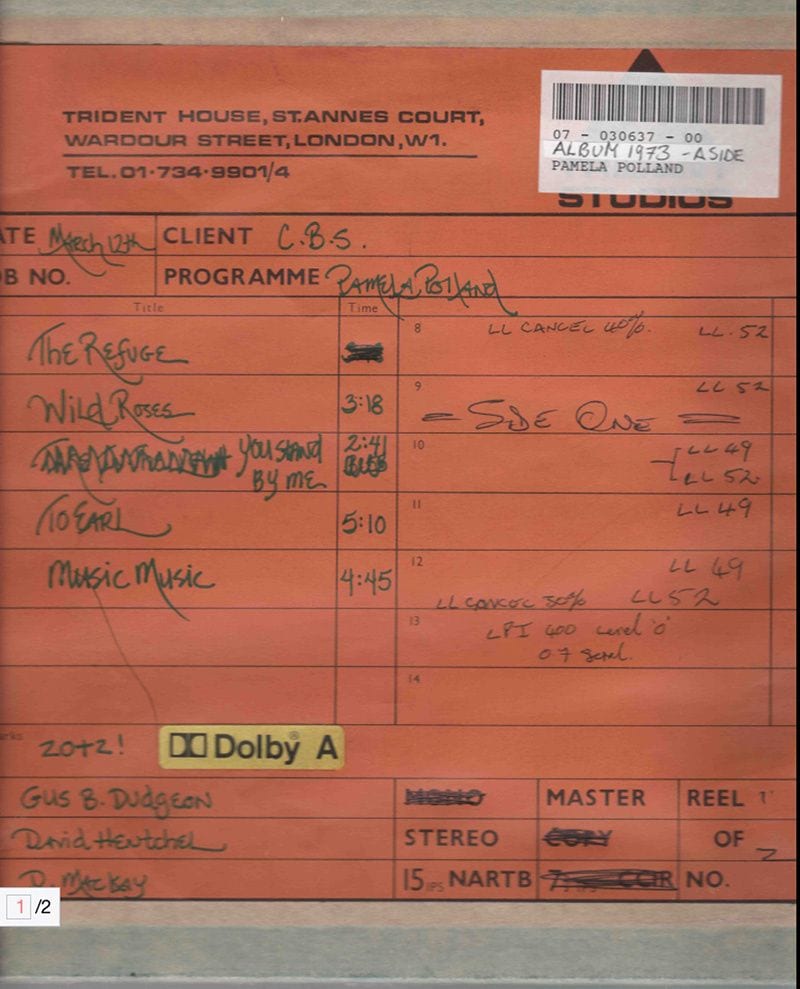
![Call for Papers: All Things Reconsidered [MUSIC] May-August 2024](https://www.popmatters.com/wp-content/uploads/2024/04/all-things-reconsidered-call-music-may-2024-720x380.jpg)



